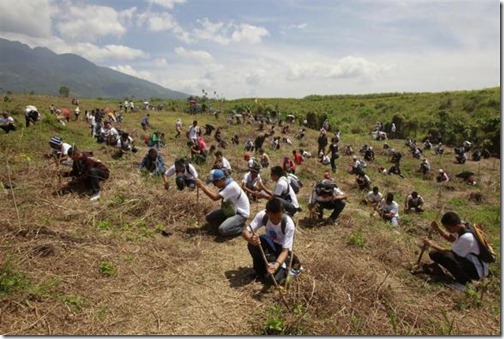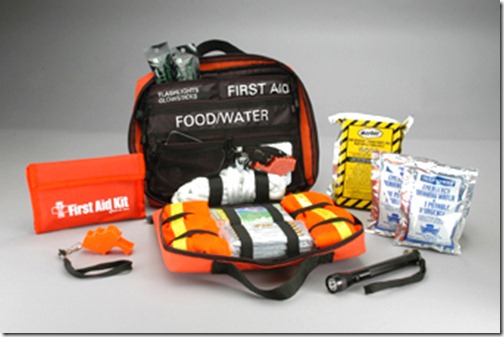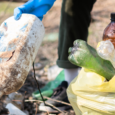When it rains in Manila, it definitely pours! Just think of Typhoon Ondoy back in 2009. Sure, the winds weren’t that strong, but the excessively heavy rainfall left an estimated 80% of Manila submerged, taking hundreds of precious lives, prompting suspension of classes, and destroying a lot of homes and properties in an instant. Metro Manila is a flood-prone area to begin with, but if people have been more prepared about the crisis, the damage could’ve been lessened.

We can never have enough trees to plant here in the Philippines.
What to do in case of flooding:
Before a Flood
- Avoid building in a floodplain. — Most of Manila’s areas are floodplains btw
- Construct barriers (levees, beams, floodwalls) to stop floodwater from entering your home.
- Seal walls in basements with waterproofing compounds to avoid seepage.
- If a flood is likely in your area, listen to the radio or television for information.
- Know the difference between a flood watch and a flood warning. A watch means flooding is possible. A warning means flooding is occurring or will occur soon.
Have your emergency flood kit ready and easily accessible just in case.
When a Flood is Imminent
- Be prepared! Pack a bag with important items in case you need to evacuate. Don’t forget to include needed medications.
- If advised to evacuate your home, do so immediately.
- If there is any possibility of a flash flood, move immediately to higher ground.
- If possible, bring in outdoor furniture and move essential items to an upper floor.
- Turn off utilities at the main switches or valves if instructed to do so. Disconnect electrical appliances.
Disaster can strike to anyone, anywhere, at anytime. It doesn’t choose who to victimize.
During a Flood
- Do not walk through moving water. As little as 6 inches (15 centimeters) of moving water can make you fall.
- If you have to walk in water, wherever possible, walk where the water is not moving. Use a stick to check the firmness of the ground in front of you.
- Do not drive into flooded areas. If floodwaters rise around your car, abandon the car and move to higher ground if you can do so safely.
- Do not touch electrical equipment if you are wet or standing in water.
After a Flood
- Listen for news reports to learn whether the community’s water supply is safe to drink.
- Avoid floodwaters; water may be contaminated by oil, gasoline, or raw sewage. Water may also be electrically charged from underground or downed power lines.
- Avoid moving water. Be aware of areas where floodwaters have receded. Roads may have weakened and could collapse under the weight of a car.
- Stay away from downed power lines, and report them to the power company.
- Return home only when authorities indicate it is safe.
- Stay out of any building if it is surrounded by floodwaters.
- Service damaged septic tanks, cesspools, pits, and leaching systems as soon as possible. Damaged sewage systems are serious health hazards.
- Clean and disinfect everything that got wet. Mud left from floodwater can contain sewage and chemicals.
(Source: U.S. Federal Emergency Management Agency)
We can never tell where and when the next calamity will strike. As of now, Bagyong Juaning has just left with an aftermath and we now have Tropical Storm Kabayan entering our country. We should always be vigilant and be ready because when nature strikes, we wouldn’t want to take the whip with our eyes closed.






